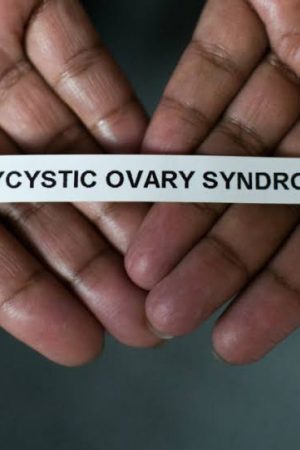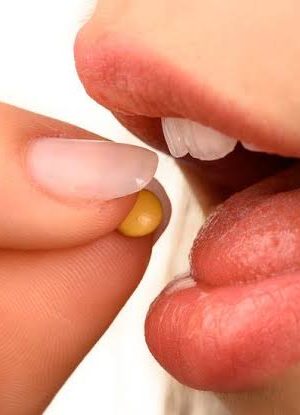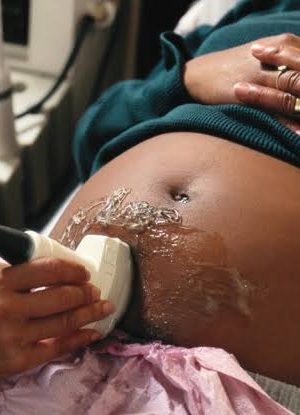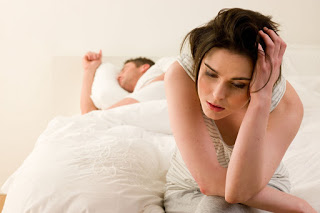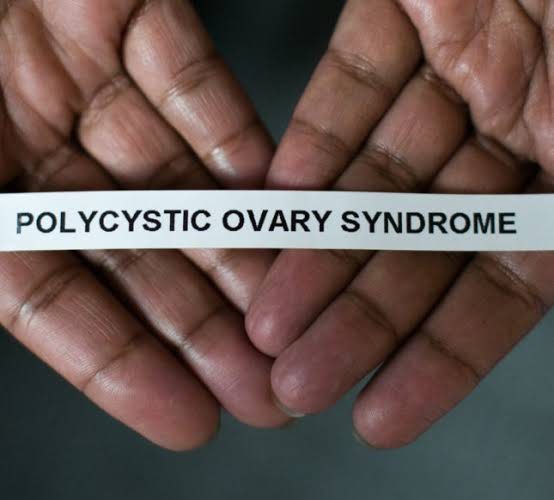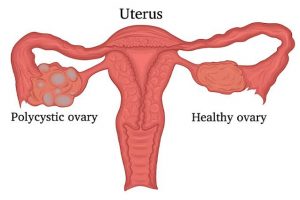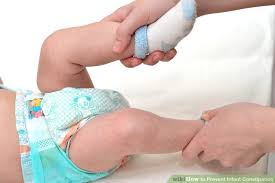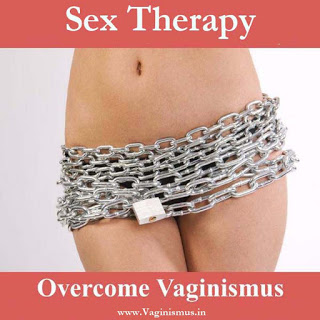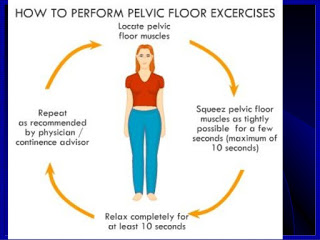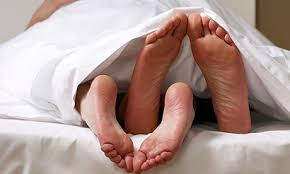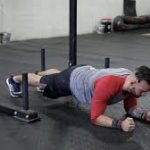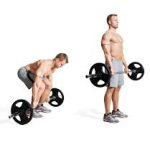Women’s Health
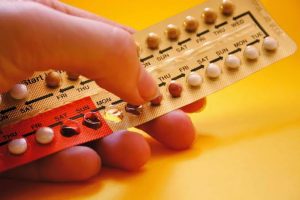
This year, you have decided to do everything in your power to stay healthy; you take more veggies and fruits, do more exercises, ditch sugar and other highly processed foods and even had to swap somethings for healthier alternative and that’s great. But, every other day, you still pop some birth control pills which may be depleting the amount of essential vitamins and nutrients in your body. This alone can potentially undo every effort you have been putting in to stay healthy. Sadly, for so many women, this is a reality as they must be on birth control pills.
The truth remains that even with various methods of contraception, oral contraceptives seems to be the most accessible, affordable and commonly used form of birth control.
Almost 17% of Nigerian women are on birth pills. Definitely every woman that uses these pills are aware of what they are capable of, but not all know that these birth control pills can alter how nutrients are used by the body, thereby leading to possible deficiencies.
Birth control don’t only increase the risk of vitamin deficiency, they also may be draining your body of essential nutrients needed for mood, cognition, and cardiovascular health.
HOW DOES BIRTH CONTROL PILLS AFFECT NUTRENT AVAILABILITY
There are 2 major ways in which OCPs result in nutrients depletion.
Firstly ,the work of OCPs is to introduce artifical hormones into your body, when this happens, there would be more hormones for your liver to deal with, meaning there would be need for more nutrients for your liver to carry out its functions
Secondly, OCPs has the tendency to distort your intestinal walls. When this occurs, less nutrients are absorbed and available for utilization
This is not to scare you, it’s just for awareness. You can still be on birth control pills, but be sure to supplement on prenatal vitamins (especially those ones that tends to be depleted ) as you’re on the “pills”
For a few important vitamins, lets discuss how birth control pills affect them:
– BIRTH CONTROL AND VITAMIN D DEFICIENCY
Vitamin D is important for maintaining the immune system and calcium levels and also serve as a hormone. As adequate calcium is essential for bone health, vitamin D is also essential for bone health.
According to a new study published in the Endocrine Society’s Journal of Clinical Endocrinology & Metabolism, birth pills with estrogen are seen to lower vitamin D levels. This can be adjusted by increasing exposure to sunlight which can improve vitamin D levels by 20% in women on oral contraceptives.
Vitamin D deficiency is associated with pregnancy complications such as preeclampsia, a condition characterized by high blood pressure and kidney and liver disorders. It also increases the risk of childhood disorders, such as type 1 diabetes and asthma.
It is important to supplement on vitamin D and also incorporate vitamin D rich food sources into the diet if you would continue with birth control pills. Examples of vitamin D rich foods include: Fatty fish, like tuna, mackerel, and salmon, Foods fortified with vitamin D, like some dairy products, orange juice, soy milk, and cereals, Beef liver, Cheese, Egg yolks
BIRTH CONTROL AND VITAMIN B DEFICIENCY
Vitamins such as B6, B9, and B12, play an important role in maintaining normal functions of cells and nerves. Their importance in the body cannot be overemphasised as deficiency of any of these B vitamins can lead to depression, anemia, and poor cognitive functions.
Furthermore, B vitamins are also paramount for normal health and development of the fetus as well as neurological development too.
BIRTH CONTROL AND FOLATE DEFICIENCY
For example, research has proven a link between oral contraceptive pills and low blood folate levels.
Also, research also has it that oral contraceptive may increase the risk of cervical cancer, and a folic acid supplement may prevent or slow down this risk. So therefore, for women of child-bearing age who are on contraceptive pills, it is also important to supplement of folic acid.
BIRTH CONTROL AND VITAMIN B12 DEFICIENCY
Vitamin B12 plays an important role in assuring healthy body cells and nerves. It also aids in the process of gene formation.
Studies have found, compared those that are not on contraceptives, women who take contraceptives are low on B12 and this might also lead to pernicious anemia. It is very important to also supplement on B12 if you are currently on contraceptives as this might be beneficial to your health.
BIRTH CONTROL AND IRON DEFICIENCY
Iron Is an essential nutrient because it helps red blood cells to carry oxygen from the air you breathe to the body cells.
Iron deficiency anemia is almost seen in 20% of the women. Surprisingly, according to research, women on birth control pills has improved iron-binding capacity thereby managing iron deficiency.
Women with heavy periods are at an increased risk of iron deficiency. Birth pills help improve hormonal levels and manage menstrual blood flow.
This doesn’t mean you should be dependent on birth control pills for adequate iron intake. Foods that can combat iron deficiency include pork, beef, raisins, apricots etc
BIRTH CONTROL AND ZINC DEFICIENCY
Zinc is present in many body cells and is important for supporting the body’s immunity.
While all studies do not report zinc deficiency in women on pills, most studies have shown that even a small dose of these pills negatively alters zinc levels.
In pregnancy, zinc deficiency may result in growth retardation, stillbirth, and preterm delivery. Zinc supplements should be recommended to support women on birth pills.
BIRTH CONTROL AND MAGNESIUM DEFICIENCY
Magnesium supports the health of the immune system, heart, nerves and muscles functions. Surprisingly, magnesium supports about 300 chemical reactions in the body.
For women on the pills, it is important to note that that magnesium levels are depleted with these pills. Also, other factors like high-intensity exercise, high caffeine intake, poor sleep, and chronic stress can drain the body’s magnesium store.
Based on these findings, it is recommended that women on birth pills should take magnesium supplements along with magnesium-rich foods, such as pumpkin, cashews, and spinach
CONCLUSION
Micronutrients (needed in small amounts) are also very essential in our daily activities and can lead to severe deficiency symptoms if not easily gotten from our diet or supplements.
These nutrients are easily depleted with contraceptives, so it is important to note the nutrients listed and supplement on them while on those pills
Consider speaking with a dietitian once you want to go on birth control pills so as to help prevent depletion of these mentioned nutrients
SOURCES
– https://www.pocketpills.com/blog/birth-control/birth-control-and-vitamin-deficiency#:~:text=Birth%20control%20pills%20include%20progestin,%2C%20cognition%2C%20and%20cardiovascular%20health.
– https://www.sciencedaily.com/releases/2016/08/160804135421.htm
– https://pubmed.ncbi.nlm.nih.gov/9883381/
– https://www.researchgate.net/publication/249321690_Oral_contraceptives_and_changes_in_nutritional_requirements
– Folic acid and the prevention of neural-tube defects.
Wald NJ
N Engl J Med. 2004 Jan 8; 350(2):101-3.
[PubMed] [Ref list]
– Serum folate and Vitamin B12 levels in women using modern oral contraceptives (OC) containing 20 microg ethinyl estradiol.
Sütterlin MW, Bussen SS, Rieger L, Dietl J, Steck T
Eur J Obstet Gynecol Reprod Biol. 2003 Mar 26; 107(1):57-61.
[PubMed] [Ref list]
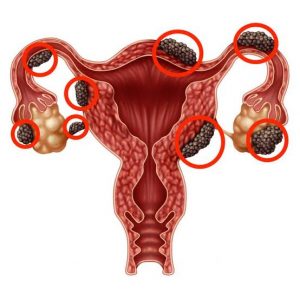
Endometriosis occurs when non-cancerous tissues that resemble the ones lining your uterus , begin to grow outside of the uterus in places like the ovaries, the fallopian tube, pelvis and bowel.
It is a hormone dependent type of condition (especially steroid based hormone estrogen).
The tissues in the uterus becomes thicker than normal, breaks down and leave the body during menstruation, but these tissues that grow outside of the uterus also thicken and break down but cant leave the body thereby leading to pain, inflammation, formation of scar tissue and most likely, potential fertility problems.
According to a study, about 70 million women all over the world are affected by endometriosis. Surprisingly, the disease is even more common than breast cancer and diabetes.
Endometriosis usually occurs during active menstruation when there is still much release of estrogen (i.e it is hormone dependent), it rarely occurs after menstruation.
WHAT ARE THE SYMPTOMS?
Symptoms always vary from one woman to another, might come in as mild or moderate or severe.
The degree of pain doesn’t always equate the severity of the condition; you might have very excruciating pains and it’s a mild condition.
Symptoms involved in endometriosis include:
- excruciating pains during period
- pain experienced in the lower abdomen and back either before or during menstruation
- cramps around menstruation week
- heavy bleeding
- infertility problems
- pain after sexual intercourse
- Diarrhea or constipation
- Bloating
WHAT EXACTLY CAUSES ENDOMETRIOSIS?
The etiology behind endometriosis is not known yet, but according to some theories put forward, these suggested causes might be linked to the condition:
- Genetics: the condition most likely runs in families and affects people of some ethnic groups more
- Retrograde menstruation: this happens when some of the womb lining flows up back through the fallopian tubes and hangs on to some organs of the pelvis instead of leaving the body as period.
- When the immune system is malfunctioning
These suggested theories don’t fully explain the causes of endometriosis; it is a condition caused by many factors put together.
RISK FACTORS
Some other factors include:
- AGE: usually affects women from the ages of 25-40, symptoms can be seen from puberty though.
- FAMILY HISTORY
- PREGNANCY HISTORY: pregnancy might have the tendency of decreasing the risk of endometriosis, those who haven’t had children might have higher risks of endometriosis.
- MENSTRUATION HISTORY: issues associated with this can include shorter cycles, heavier and longer periods and might place the individual at higher risks.
HOW CAN I PREVENT ENDOMETRIOSIS?
Sadly, there is no known way to prevent endometriosis. The possible ways are to create awareness, ensure early diagnosis and management to help slow down or halt the natural progression of the disease.
HOW IS IT DIAGNOSED?
Endometriosis can be suspected from history; tender masses might be visible on the vagina and cervix during pelvic examination.
TREATMENT OPTIONS
Even though there is no known treatment option for endometriosis, it can be managed to help reduce symptoms. Possible ways to help manage endometriosis includes:
- nutritional therapy
- exercise
- pain medication
- hormone therapy
- surgery
These options totally depend on the severity of the condition.
HOW ENDOMETRIOSIS MAY BE LINKED TO DIET
Diet may have a potential role in the cause of endometriosis through its influence on hormones derived from cholesterol. Hormones like oestrogen which are cholesterol based are the major culprit in endometriosis. So, studies have shown that a plant-based and high fibre diet increase oestrogen secretion and reduce the availability of oestrogen, and this might help reduce endometriosis progression. This diet would help to modify the risk of endometriosis by altering the metabolism of cholesterol based hormones.
FOODS THAT MAY NEGATIVELY AFFECT ENDOMETRIOSIS
Endometriosis can be influenced by your lifestyle, and this determines the severity of the condition and the pain experienced.
The following factors might negatively influence the condition:
- High intake of transfat : research has it that women who consumed high amounts of transfat especially from fried and processed foods had a higher rate of diagnoses.
- Red meat consumption
- Gluten: A study showed that most women experienced a decreased pain while they went on a gluten free diet
- High FODMAP diet: low FODMAP diets are majorly prescribed to people who has irritable bowel syndrome (IBS). A research found out that those with IBS and endometriosis that followed a low FODMAP diet had reduced symptoms
Alcohol, caffeine, gluten, red meat, saturated and trans fat can negatively affect hormone regulation in people with endometriosis as they lead to progression of the disorder. So, they should be totally avoided
FOODS THAT MAY POSITIVELY AFFECT ENDOMETRIOSIS
A nutrient dense and well adequate diet can help to reduce symptoms from endometriosis. you should consider:
- A high fibre diet: a diet high in fibre helps reduce the production of oestrogen which is implicated in the mechanism of endometriosis, and also helps to reduce insulin production, which relates to the progression of endometriosis. foods high in fibre includes green leafy vegetables, legumes and whole grains.
- iron-rich foods, such as dark leafy greens, broccoli, beans, fortified grains, nuts, and seeds
- foods rich in essential fatty acids, such as salmon, sardines, walnuts, chia, and flax seeds
- antioxidant-rich foods found in colorful fruits and vegetables, such as oranges, berries, dark chocolate, spinach, and beets. Studies has linked oxidative stress to the progression of the disease, so its important to also consider these antioxidant rich food sources.
SUPPLEMENTS ALSO HAVE A ROLE TO PLAY
Apart from an adequate diet, nutritional supplements also have unique roles to play while managing endometriosis.
For example, supplementing with 1200 IU of vitamin E and 1000 IU of vitamin C was shown to reduce pelvic pain in some women with endometriosis after a clinical trial.
Also, curcumin, vitamins A and D proved to help in the management of endometriosis
EXERCISE AND OTHER ALTERNATIVES
Exercise could help to manage endometriosis as it reduces the production of estrogen and helps in the release of serotonin “the feel good hormone”. Some relaxation techniques can be explored
- meditation
- yoga
- accupunture
- massage
SUMMARY
Lifestyle changes and dietary patterns could help to reduce the symptoms associated with endometriosis, you can speak to a dietitian and a doctor to help you through this condition as everyone’s body’s are different and should be handled individually.
SOURCES
- https://www.ncbi.nlm.nih.gov/pmc/articles/PMC3941414/
- https://nutritionguide.pcrm.org/nutritionguide/view/Nutrition_Guide_for_Clinicians/1342065/all/Endometriosis
- Zondervan KT, Becker CM, Missmer SA. Endometriosis. N Engl J Med 2020; 382:1244-56.
- Agarwal SK, Chapron C, Giudice LC, et al. Clinical diagnosis of endometriosis: a call to action. Am J Obstet Gynecol 2019(4):354-64.
- https://www.researchgate.net/publication/247770015_Diet_-_A_New_Approach_To_Treating_Endometriosis_-_What_Is_The_Evidence
- Harris, H. R., Chavarro, J. E., Malspeis, S., Willett, W. C., & Missmer, S. A. (2013). Dairy-food, calcium, magnesium, and vitamin D intake and endometriosis: a prospective cohort study. American Journal Of Epidemiology, 177(5), 420-430.
- Missmer, S. A., Chavarro, J. E., Malspeis, S., Bertone-Johnson, E. R., Hornstein, M. D., Spiegelman, D., Hankinson, S. E. (2010).
- A prospective study of dietary fat consumption and endometriosis risk. Hum Reprod, 25(6), 1528-1535.
There are obviously benefits attatched to breastfeeding that you already know; so lets see the ones you might not be aware of:
I’m sure many new parents aren’t prepared for the effect that having a new baby can have on their desire for lovemaking and intimacy.
Keeping it together is really hard trust me.
There are hormones responsible for some behavioural changes after childbirth and lactation period.
Lets pick these hormones and see how they play a major role in sexuality.😉
🍌ESTROGEN: All women have low levels of estrogen for the first couple of months after giving birth. Continued breastfeeding extends this period for at least six months and for some women the lower levels may last as long as they are breastfeeding. Lower estrogen levels may cause vaginal dryness, tightness and tenderness. You could apply water based lubricants during lovemaking.😁
🍉OXYTOCIN: The milk ejection reflex is triggered by the release of the hormone oxytocin. Oxytocin is also released in men and women at the time of orgasm and is recognized to increase bonding. If mother, or her partner, has concerns about milk ejection during lovemaking she can feed the baby or express beforehand to reduce milk flow. Direct pressure with the heel of the hand to the nipple can stop milk ejection or the couple can keep a towel handy to deal with leaking milk.
🍆PROLACTIN: Prolactin levels increase when baby is breastfeeding or mother is expressing milk. . Prolactin is also a part of the hormonal cascade involved in lovemaking. It counteracts the effect of the hormone dopamine which is responsible for sexual arousal and provides the body with a feeling of sexual gratification. The release of prolactin during breastfeeding creates a feeling of calm and relaxing.
🌶TESTOSTERONE : This is an androgen hormone which is usually thought of as a male hormone. It is also naturally occurring in the female body where it is produced in the ovaries and adrenal glands. Testosterone appears to contribute positively to the health of vaginal tissue and to contribute to genital sexual arousal.
Well, the hormones involved during breastfeeding might dampen sexual desire in the early months of childbirth, support from the male spouse is very important. Some mothers feel that stopping breastfeeding might reduce tendencies of high libido, and shr might also feel unhappy that she’ll deprive her infant its right, which might reduce her desire for lovemaking.
You really need to sit down as a couple and balance things between breastfeeding , parenting and being a couple.
Find time for parenting and merge it with time for intimacy😎.
Life is not hard.
Source: https://www.lllc.ca/thursdays-tip-breastfeeding-and-hormones-sexuality
As a first time mother and a health practitioner, on being pregnant, I had already decided to exclusively breastfeed my baby for 6 months and continue thereafter with alongside complementary feeding because I was a nutritionist right? I had to ensure I practiced what I preached. Many experiences and drama trailed my journey to motherhood. My very first battle was with constipation.
Knowing that I was exclusively breastfeeding I became even more worried because there was little or nothing I could do to help my bundle of joy because she was to be on breast milk only for the next 6 months. Nope, maternal instinct kicked in and I knew I had to do something! Below is what I gathered from the experience.
What is Constipation?
Constipation could mean various things to different people. For some people, it means infrequent passage of stool (feces), to others; it means hard stools, difficulty in passing stool, or a sense of incomplete emptying after a bowel movement. According to the National Institute of Diabetes and Digestive and Kidney Diseases, constipation is one of the most common digestive problems in the United States, affecting around 42 million Americans and is not uncommon among infants. Constipation is a common problem that affects both all ages irrespective of race.
Causes of Constipation
Often when a child is constipating, there is infrequent bowel movement and most times the stool is hard, dry and painful to pass.
Causes of constipation in infants include:
- Withholding stool: This happens when a child is trying to hold his bowel movement in, due to some reasons such as stress about potty training, or not wanting to use the rest rooms in certain places (like in school), or pains while stooling.
- A low fiber diet.
- Side effects of certain medications.
Signs and Symptoms
Understanding the signs of constipation can help you detect a potential issue before it becomes a big problem.
- Infrequent bowel movements: The number of bowel movement of a child will reduce as to the normal frequency during constipation, sometimes during the period of trying new foods which the body seems to find different from the “usual”, sometimes may cause constipation
- Blood in the stool: If you notice streaks of bright red blood in your child’s stool, it is likely a sign that the child is pushing too hard to have a bowel movement. Pushing and passing out a hard stool may cause tiny tears around the anal walls, which can result in blood in the stool.
- Refusing to eat: Child may feel full quickly or refuse to eat while constipating.
What Can You Do?
If you notice signs of constipation, you can try several strategies to offer your baby relief. These strategies include:
A high-fiber diet: Your child’s plate should be teeming with fresh fruits and vegetables, high fiber cereals, whole grain breads and a variety of beans and other legumes can be very helpful. Foods containing probiotics like yogurt can also promote good digestive health. If your child does not like fresh fruits much, you could try pureeing/blending it or adding them to certain meals to encourage acceptance. Besides, adding fruits and vegetables to your child’s diet early in life helps build healthy eating habits later in life.
Switch up the milk: If your baby is breastfed, you can try adjusting YOUR diet. Baby may be sensitive to something you are eating, which could be causing the constipation, though this is uncommon. Bottle-fed babies may benefit from a different type of formula (which are rich in fiber), at least until the constipation clears. Sensitivity to certain ingredients can cause constipation.
Use solid foods: Although certain solid foods can cause constipation, but others could improve it. If you recently started feeding your baby solid foods, try adding a few high fiber alternatives, such as: broccoli, pears, prunes, peaches, skinless apple. Instead of refined cereals or puffed rice, offer cooked grains, such as barely or brown rice. Whole grain breads, crackers and bran cereals also add a lot of bulk to stool, which may help clear the constipation. Beans and other legumes provide soluble fiber which cause stool to move through the body faster.
Use pureed or mashed foods: if your baby is over 6 months and has not made the transition to solid foods yet, try some of the foods listed above in their pureed form. Keep in mind that fruits and vegetables have a lot of natural fiber that will add bulk to your child’s stool. Some are better than others at helping stimulate a bowel movement.
Up the fluids: Proper hydration is essential for regular bowel movement. While focusing on fiber, don’t forget fluids. Water is great for keeping your baby hydrated. If your child is eating plenty of high fiber food but not getting enough fluid to help flush it through the digestive tract, it could make matters worse. There should liberal intake of water, soda and sugary drinks should be limited. Usually breastfed babies get enough fluid from the breast milk. However, infants from 7-12 months need about 0.8 L/day of fluid and children of ages 1-3 require 1.3L/day.
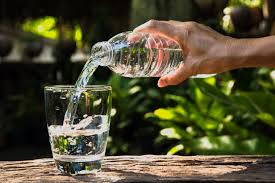
Encourage exercise: Movement speeds up digestion, which can help move things through the body more quickly. If your child is not walking yet, bicycles and play dates would be helpful.
Massage: Gentle stomach and lower-abdominal massage stimulate the bowel to pass a bowel movement. Do several massages throughout the day, until your child has a bowel movement.
Regular Toilet Time: Encourage your growing child to use the toilet first thing in the morning. Particularly for a younger child, you may get better results by telling, not asking. Instead of suggesting, “Do you need to go to the bathroom?” Simply say, “Time to go to the bathroom”.
Conclusion
Because breast milk is quite nutritious, sometimes a baby’s body absorbs almost all of it, leaving little or nothing to move through the digestive tract. Your baby may poop only once in a while—it is perfectly normal for breastfed infants to have a bowel movement once a week. Other infants just have a slower (but completely normal) gut, so they don’t go very often. But if your baby seems to be in pain, or you have any complain, call your doctor or dietitian. In rare cases, a medical problem could cause lasting, severe constipation. For kids that have progressed to eating solid foods very well, encourage them to consume more of high fiber foods and to take enough water.
Definition
Types of Vaginismus:
Secondary Vaginismus:
Variations in the Classifications:
Causes of Vaginismus
- Empty your bladder.
- Contract your pelvic floor muscles, and count to 10.
- Relax your muscles, and count to 10.
- Repeat this cycle 10 times, three times a day.
- To successfully strengthen your pelvic floor muscles, don’t engage the muscles of your abdomen, buttocks, or thighs when doing these exercises.
Even More Tips for Better Sex
If pushups, crunches, and deadlifts aren’t your idea of a sweaty good time, you’ve still got plenty of exercise options to help keep things steamy.
Pick your pleasure: 
Rather walk, swim, or jog? How about Pilates or yoga? Maybe you prefer biking or skiing? Great, because Paul Frediani, fitness coach and co-author of Sex Flex: The Way to Enhanced Intimacy and Pleasure , says “barring any health problems, cardiovascular exercise of any kind is a great way to stimulate your sex life”. Now trust me, enjoying the stuff you do helps relieves you of the stress of the activity, makes you look forward to it and enhances it’s benefits.
But you’ll want to avoid the weekend warrior syndrome to get the most out of exercising. Th.s means you have to exercise more than just on weekends to reap full benefits. Aim for a 30-minute workout five times a week. Get your blood pumping regularly and the payoff is simple: endurance, more strength to hold positions, and the flexibility to hold them comfortably. Now that’s sexy. *wink*
Bonus: Better Erections!
Wowza!
You may already be sold on the benefits of exercise, but here’s a bonus free of charge. Exercise may also help beat erectile dysfunction. One study showed that, for men over 50, being physically active means a 30% lower risk of erectile dysfunction as compared to men who are sedentary. Studies also show a strong link between obesity and erectile dysfuncton.
In addition, people who exercise often have a better body image than people who don’t. This can help them feel more sexually appealingnt and confide. One study found that “80% of men and 60% of females who exercised two to three times a week felt their sexual desirability was above average,” Weil says. Exercise could also help produce more muscles, which in turn increases testosterone production and sex drive.
Practice! Practice!! Practice!!!
If you’re not lasting as long as you’d like in bed, you might need some practice. While sex is the best way to practice for sex, masturbation can also help you improve your longevity.
However, how you masturbate could have detrimental effects. If you rush through it, you could inadvertently decrease the time you last with your partner. The secret is making it last, just like you want to when you’re not alone.
Dietary Management of Sexual Dysfunction

Certain foods can also help increase blood flow towards those parts you want them most. They include:
Onions and garlic: These foods may not be great for your breath, but they can help your blood circulation.
Bananas: This potassium-rich fruit can help lower your blood pressure, which can benefit your important sexual parts and boost sexual performance.
Chilies and peppers: All-natural spicy foods help your blood flow by reducing hypertension and inflammation.
Nutrients that can help you achieve better blood flow:
Omega-3 acids: This type of fat increases blood flow. You can find it in salmon, tuna, avocados, and olive oil.
Vitamin B-1: This vitamin helps signals in your nervous system move quicker, including signals from your brain to your penis. It’s found in pork, peanuts, and kidney beans.
Eggs:
High in other B vitamins, eggs help balance hormone levels. This can decrease stress that often inhibits an erection.
Sources:
http://www.healthline.com/health-slideshow/male-sexual-performance.Accessed 27th July, 2016.
http://www.askmen.com/dating/love_tip_250/287b_love_tip.html
http://www.webmd.com/men/features/exercises-better-sex. Accessed 27th July, 2016.
Hamilton, L.D., Rellini, A.H., & Meston, C.M. “Cortisol, sexual arousal, and affect in response to sexual stimuli” Journal of Sexual Medicine 5 (2008): 2111-18.Accessed 27th July, 2016.
Ojanlatva, A., et al. “Sexual activity and perceived health among FinnisAccessed 27th July, 2016.h middle-aged women.” Health and Quality of Life Outcomes 4 (2006).Accessed 27th July, 2016.
McNamara, E., Alfred-Thomas, J., & Freedland, S.J., “Exercise Correlates to Higher Sexual Function Scores in a Cohort of Healthy Men” (paper presented at the 105 Annual Meeting of the American Urological Association, 31 May 2010).Accessed 27th July, 2016.
His and Her Heath. ” Smoking, Lack of Exercise Impacts Sexual and Urinary Function .” Accessed 27th July, 2016.
Regular Physical Activity Can Lead to Enhanced Arousal!
During exercise feel good chemicals called endorphins are released, and this same release happens during sex. The more frequently one can trigger these endorphins release via sex or exercise, the easier it is to become sexually aroused. The sex organs depend a lot on blood pressure. The brain sends signals to them that causes vessels to swell with blood. Your heart is responsible for pumping the blood. If your heart isn’t at its healthiest, it can cause problems with blood flow from the heart to the vessels in the vagina and penis. This can make it difficult to achieve a full arousal and affect overall sexual satisfaction. Make sure your circulatory system is working at top shape, because basically, what’s good for your heart is good for your sexual health!
Sex and Exercise
Strength training could be just what the doctor ordered for your sex life. The reason being that “weight lifting causes the body to produce testosterone , which is the primary precursor for the male sex drive,” says McCall, who recommends lifting enough to feel fatigue by the 10th repetition. In fact, some studies have linked short intense exercise, such as weight lifting, with increased testosterone levels. To improve your sex life, do some push-ups, sit-ups, and crunches. These muscle-building exercises can help lead to better sex by strengthening the shoulders, chest, and abs. Strong upper body strength can increase stamina since these muscles are most used during intercourse.
Kegels:
Kegels is a wonderful exercise for both the male and female sexual health because these exercises can help endurance and control by toning the pubococcygeus (PC) muscles — the ones that let you stop the flow of urine mid-stream. They help the men stay harder longer and prevent premature ejaculation. For the women, it’s keeps yuuou tight and firm down there and helps you achieve orgasm faster! (tip: try doing this exercise while he’s inside you and watch the both of you explode together). Named after Los Angeles physician Arnold Kegel, they strengthen the muscles in your body’s pelvic floor, which can lead to better sex. “Men can use Kegels to delay ejaculation by contracting these muscles just before orgasm,” says McCall. To do Kegels, start by interrupting the flow of urine when going to the bathroom to get familiar with your PC muscles. After that, you can do Kegels anytime and any place by squeezing the PC muscles. Hold for 10 seconds, relax, and do as many reps as you can before tiring.
Fast Walking:
In a study of 31,000 men over age 50, Harvard researchers found that aerobic exercise resulted in a 30-percent lower risk of erectile dysfunction (ED) . More specifically, according to another study, aerobic activity that burns at least 200 calories per day (equal to fast walking for two miles) can significantly lower the risk of ED. Brisk walking is thought to help ED by improving circulation and blood flow. “Fast walking, running, and other aerobic activities help your sex life for the same reason that they prevent heart attacks,” says McCall. “They keep your blood vessels clear.” The result can be stronger and longer erections. Vigorous activities, such as running and brisk walking, also release endorphins and relax you, which can boost sexual performance.
Swimming:
In another Harvard study of 160 male and female swimmers, swimmers in their 60’s reported sex lives comparable to those in their 40s. Since sexual activity can be an act of endurance, long-distance swimming can keep you going and going like the Energizer bunny. “Swimming for at least 30 minutes three times a week will increase sexual endurance,” says McCall. Swimming is also a great activity for weight loss, which can also lead to better sex. A randomized, single-blind study of 110 obese men with ED found that losing just 10 percent of their body weight improved sexual function in one third of the men. And it’s no secret that losing excess body fat will help attain those six-pack abs and make you more attractive to potential partners. The result: better sex!
Core Strengthening:
Strength in the abdomen, pelvis, middle and lower back is what “core strength” refers to. A couple of good exercises to improve core strength are abdominal crunches and alternate arm leg raises. Alternate arm leg raise is where you begin on all fours facing down with knees bent, and then lift the opposite arm and leg at the same time. Hold this for a few seconds and then swap sides. Not only will this be good for your core, it will also work your shoulders and glutes, plus help with balance .
Upper Body Work:
Any sexual position where you have to support yourself using the arms (such as missionary for the man) requires strength in your upper body. Key exercises to help strengthen are push ups, which work the chest and triceps, the rowing machine in the gym, or using free weights to do various upper body sets, such as bicep curls, tricep push backs, and shoulder press.
Try This:
Lie on your back, hands supporting your neck, knees bent, and your feet on the floor. Then bring your body up just enough to get your shoulders off the ground. Do 3 to 5 sets of 15 to 20 repetitions.
For additional ab strength, Weil suggests men and women also do bridges. Lying on your back, knees bent, feet on the floor, lift your hips up and down for 3 sets of 15 reps. Men can also try pelvic tilts. Standing up or lying down, straighten your lower back and pull your belly button in until your lower back touches the wall or floor. Women can try Kegels.
Deadlifts:
“This exercise will keep your back as strong as it can be”, Weil says, and give your legs and torso a workout too. You start in a neutral bent-over position and raise a weighted barbell or dumbbells from the ground.
Squats:
Just like the previous exercise, everyone has heard of these.
Squats will help you in a very similar way to how deadlifts help you: through hip extension. These can be very tiring as well, so if you’re performing high reps, you’ll definitely be getting some cardio in as well. And we all know how much that can help in the bedroom.

But another, and often overlooked way, that squats can help your sex life is by getting you used to standing while carrying weight. Many people have the fantasy of having sex against the wall while holding their partner. This is something that requires a great amount of strength and not a lot of people can do this. Squats will develop your leg and back strength to such an extent that you’ll quickly see that holding your partner against the wall isn’t as hard as it seems to be. Many people are scared to perform these as well, out of fear of injuring their knees. As mentioned before, if performed correctly, squats are 100% safe. Take your time to learn the form, and do not feel obliged to lift heavy weights!
Planks:
These are a great exercise that will really come in handy while you’re in missionary position. This position can be very exhausting for your arms and abs. What better way to get better at missionary than basically mimicking the movement?
There are many ways that you can perform planks . The first and most simple way is to do a plank on your elbows. The next step up would be to hold it in a push up position. If that get’s too easy for you, then you can hold it while having your hands on an exercise ball instead of the ground. The last variation is the hardest, but also the most effective, and the one that will benefit you the most in bed. Keeping a tight core while your body wants to move around is directly going to benefit you while you’re
Interval Training (HIIT):
Sex isn’t a sprint…well, not always. It has a cardio component to it. But something that a lot of people forget is that sex isn’t something that you do at a constant rate. You go fast. Then slow. Then fast. Then slow. You’re always changing it up. And your training should reflect this.
This is where interval training comes into play (also known as HIIT , high intensity interval training). HIIT can be done with your preference of cardio. I like to do it on the bike.

The way it works is you split your workout into intervals. You sprint all out for 15 seconds, and then go at a steady state for 90 seconds. You keep switching between the two for a total of 10-15 min.
Incorporating HIIT into your workouts will have you ready for exactly what’s to come later that night in the bedroom.
Leg Raises:
This is an ab exercise that your girl will thank you for doing.
We all know that the g-spot is located at the top of the vagina. To hit the spot during sex, we have to tilt our pelvis upwards as we thrust. This is exactly what leg raises achieve. You are raising your legs to your chest, effectively training your ability to tilt your pelvis upwards.
Leg raises can be done either with a back support, or by hanging off of a pull up bar, or with bent legs, or with straight legs. The latter is more difficult in both cases, but if you can work your way to being able to doing those, you’ll definitely see the benefits.
Groin Stretches:
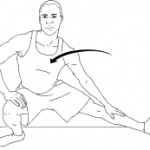
Flexibility is an often overlooked aspect of sex for men. Most people believe that the woman is the only one that needs to be flexible.
What happens when you have been having sex with the same person for years on end? Things start to become stale. You’re going to start wanting to try different things in the bedroom. And these things may require a degree of flexibility from you. Flexibility isn’t only going to help you in the future. It’s going to help you today. As I mentioned earlier, there are many different ways to have missionary sex. Many women like having their legs spread far out as they’re in that position, but not all can maintain that position without help. How do you help her do this? By spreading your legs as well, similar to a frog, which will give her leverage to spread hers.
This is something that is possible by having a flexible groin. A great stretch for your groin is the bottom of the squat. Sit at the bottom of the squat position and use your elbows to push your knees outwards. Hold this stretch for approximately 30 seconds.
Try doing some (or all) of the above workouts to improve your sexual technique, endurance, and flexibility. Your mate will be impressed with your sexual powers and, as a side benefit, you’ll get healthier and fitter along the way.
More Tips and Sources Tomorrow, don’t be too greedy lol!

